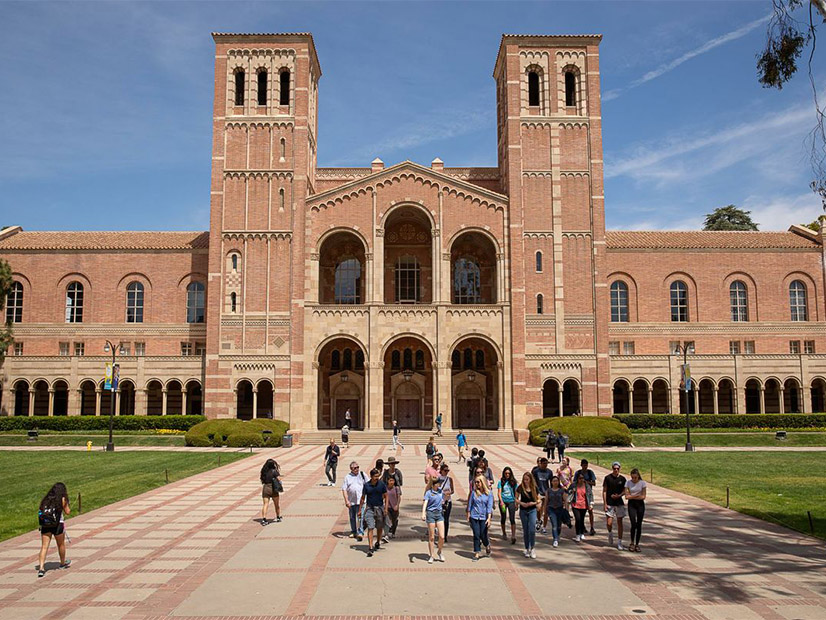California took tentative steps toward mixing hydrogen with natural gas this week with a large grant to the University of California, Los Angeles, to study the process and an announcement by San Diego Gas & Electric that it is seeking to establish a pilot project at the University of California, San Diego (NYSE:SRE), to blend the fuels in an existing gas system.
The California Energy Commission on Wednesday awarded UCLA nearly $5.7 million to “assess the feasibility and safety of targeted hydrogen blending in gas infrastructure to support decarbonization.” The project will study hydrogen’s effects on materials and components of the gas system under different blend levels and develop risk models.
“Blending pipeline gas with hydrogen is still in the early stages of development and use,” UC researchers wrote in their grant application. The UCLA research aims to “reduce the gap in critical knowledge to help [investor-owned gas utilities] introduce hydrogen in the current California gas pipeline network.”
The benefits could include production and storage of green hydrogen at solar arrays and wind farms, using renewable energy that might otherwise be curtailed, and decentralization of the state’s gas system, researchers said.
“The current California gas pipeline system is dependent on a few key pipelines, and a single point of failure can have catastrophic consequences” they said. “The decentralization of energy production will greatly improve the resiliency of the pipeline energy network infrastructure.”
The CEC approved the grant without discussion as part of its consent agenda.
On Monday, SDG&E said it had submitted a proposal to the California Public Utilities Commission for a demonstration project at UC San Diego to study the feasibility of injecting up to 20% hydrogen into plastic natural gas pipes.
“An isolated section of a gas line serving a UC San Diego apartment complex would use hydrogen-blended gas for common building equipment such as boilers and water heaters,” the utility said in a news release. “Hydrogen used in this study would be produced on site via a dedicated, grid-connected electrolyzer. The results of the study would help inform the development of a renewable hydrogen blending standard for California.”
SDG&E CEO Caroline Winn said in the news release that “achieving the state’s climate goals, including reaching carbon neutrality by 2045, will require a broad range of clean energy technologies. That’s why we are investing in the research, development and demonstration of emerging hydrogen innovations that have the potential to be a game changer.”
The utility said the project would fulfill a recommendation of the “Hydrogen Blending Impacts Study” commissioned by the CPUC and performed by researchers at the University of California, Riverside, that called for additional examination of hydrogen blending to ensure its safety, including demonstration projects under controlled, real-world circumstances.
The study found that hydrogen blends of up to 5% in the natural gas stream are relatively safe but that blending more hydrogen in gas pipelines can embrittle steel pipes and raise the risk of leaks. Hydrogen blends of more than 20% carry a higher risk of permeating plastic pipes, increasing the risk of ignition outside the pipeline, it said. (See Study Finds Adding More Hydrogen to Natural Gas Raises Risks.)
“The main concern with pipelines comprising of polyethylene is permeability to hydrogen, which may result in leakage of gaseous hydrogen,” it said. About 65% of distribution pipelines are made of plastics and 35% are steel, it noted.
SDG&E cited a similar demonstration project in England that found that injecting up to 20% hydrogen into a university’s natural gas network had not affected pipes or gas appliances.
UC San Diego would welcome the pilot project, Chancellor Pradeep Khosla said in the news release.
“Sustainability and public service have been a key part of the university since its founding,” Kholsa said. “That’s why we are helping to support California’s decarbonization efforts through this pilot project exploring the economical and safe use of blended hydrogen.”

